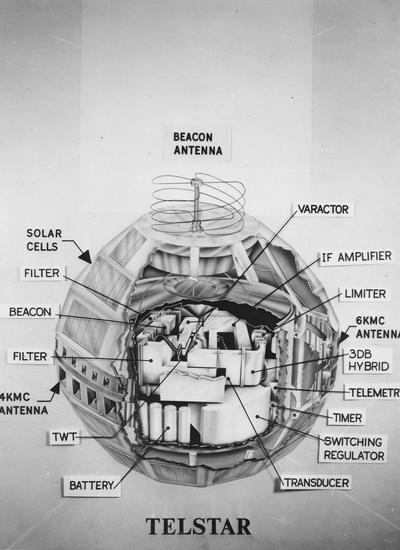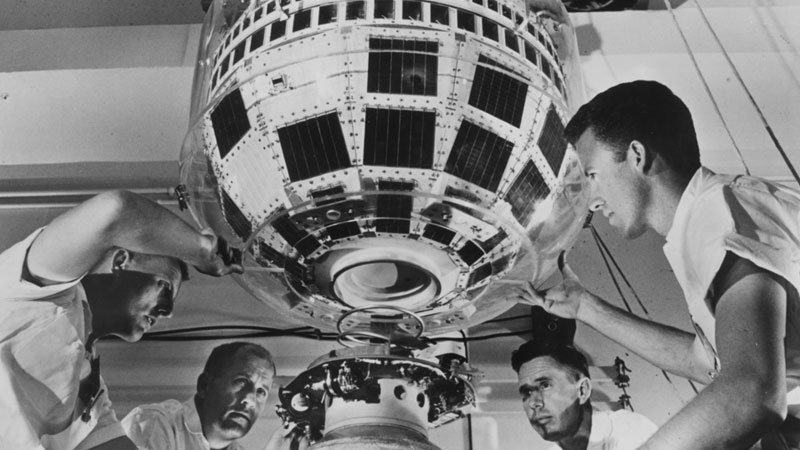Telstar is the name of various communications satellites.
Telstar 1 launched on top of a Thor-Delta rocket on July 10, 1962.
It successfully relayed through space the first television pictures, telephone calls, and provided the first live transatlantic television feed.
The satellite is roughly spherical, measures 34.5 inches (876.30 mm) in length, and weighs about 170 pounds (77 kg). Its dimensions were limited by what would fit on one of NASA’s Delta rocket. Telstar outer surface was covered with solar capable of generating 14 watts of electrical power.

Telstar 1 relayed its first, and non-public, television pictures—a flag outside Andover Earth Station—to Pleumeur-Bodou on July 11, 1962. Two weeks later, on July 23, it relayed the first publicly available live transatlantic television signal. The first pictures were the Statue of Liberty in New York and the Eiffel Tower in Paris.
Telstar 1, which had ushered in a new age of the commercial use of technology, became a victim of the military technology of the Cold War era.

The day before Telstar 1 launched, a U.S. high-altitude nuclear bomb had energized the Earth’s Van Allen Belt where Telstar 1 went into orbit.
This vast increase in the radiation belt, combined with subsequent high-altitude blasts, including a Soviet test in October, overwhelmed Telstar’s fragile transistors. It went out of service in November 1962, after handling over 400 telephone, telegraph, facsimile and television transmissions. It was restarted by a workaround in early January 1963. The additional radiation associated with its return to full sunlight once again caused a transistor failure, this time irreparably, and Telstar 1 went out of service on February 21, 1963.
Telstar 1, though no longer functional, still orbit the Earth.
Telstar 18V was launched on 10 September 2018, on a SpaceX Falcon 9.
Empire never dies!!!
(pictures from AT&T Bell Labs, now NOKIA Bell Labs)
